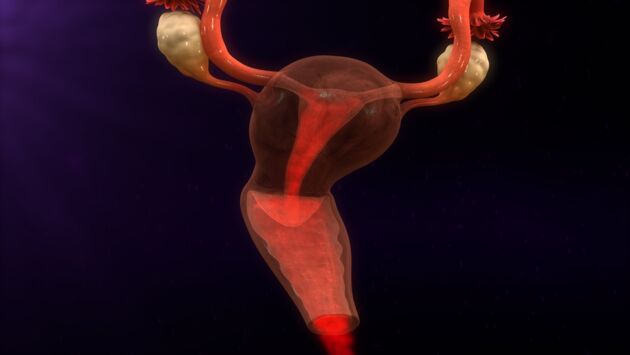Bleeding After Childbirth Stopped Started Again
Bleeding after vaginal delivery
After delivery, it is normal to have bleeding and vaginal discharge. This is called lochia.
During the first three to four days after delivery, lochia will be more abundant than menstrual discharge, and then the amount will decrease.
In addition, the color will gradually change. For three to four days after giving birth, it will be bright red. At this time, there might be brown clots, too.
Between the fifth and tenth day, lochia should change to pinkish-brown or brown.
After this, the discharge will then become white or yellowish, be free of blood clots, and have a sharp odor. Discharge is an important indicator of health, so make sure to keep track of it.
If you notice any abnormalities, consult a health care provider.
Take a quiz
Find out what you can do with our Health Assistant
What causes bleeding after childbirth?
Profuse postpartum bleeding after vaginal delivery can be due to:
- Uterine atony. The most common cause of postpartum hemorrhage is uterine atony. This is a condition when the uterus fails to contract after childbirth. This puts the mother at risk of postpartum hemorrhage (PPH). In fact, uterine atony is the leading cause of postpartum bleeding.
- Laceration. Postpartum bleeding can also happen because of uterine, cervical, or vaginal lacerations. The health care provider may need to do a proper examination to rule out laceration as the cause of PPH. A uterine rupture may also cause postpartum bleeding. This is something the health care provider should be aware of and should check to find out the cause. There are several risk factors for uterine rupture, including vaginal birth after cesarean section, uterine scars, and trauma.
- Retained or trapped placenta. A retained or trapped placenta is when the placenta is not expelled from the uterus. This usually happens when the placenta partially detaches from the lining of the uterus, causing the uterus to contract improperly. The blood vessels within the uterus continue to bleed as long as there is a retained placenta in the uterus.
- Placenta accreta. This is a condition when the placenta attaches too deeply into the uterine wall. There are two other similar conditions: placenta increta and placenta percreta. These three conditions are differentiated by the abnormality (i.e., depth) of their attachment to the uterine wall. When placenta accreta occurs, it can cause PPH, especially when the OB-GYN attempts to remove the placenta.
- Uterine inversion. This is a complication that can occur after childbirth when the uterus turns inside out. When this happens, symptoms such as postpartum bleeding, low blood pressure, and abdominal pain may occur. A uterine inversion may occur if the uterus is weak or the umbilical cord is short.

Bleeding after cesarean delivery
Common causes of bleeding after cesarean delivery include:
- Uterine trauma
- Placenta accreta
- Uterine atony
- Lacerations
Postpartum bleeding: how much blood is normal?
After childbirth, some bleeding and spotting is completely normal. And this may last for about four to six weeks.
Heavy bleeding after giving birth is called postpartum hemorrhage.
According to medical experts, blood loss or postpartum bleeding is excessive when it's more than 500 milliliters of blood after vaginal birth and more than 1,000 milliliters after a C-section. This can cause a lot of complications that can put overall health at risk.
It's most likely to happen within the first 24 hours after delivery. But it can happen anytime within the first several weeks after giving birth.
Signs of abnormal postnatal bleeding
How do you know that you have abnormal bleeding? Many people don't know that they have a heavy postpartum hemorrhage until they start to experience certain symptoms such as weakness, nausea, rapid heart rate, and dizziness. There are other symptoms that can indicate abnormal bleeding before these other symptoms arise:
- Bleeding that soaks more than one pad an hour
- Blood clots that seem abnormally large (bigger than a plum)
- A continuous flow that does not seem to stop
Other signs that may accompany abnormal postnatal bleeding include:
- Low blood pressure (hypotension)
- Dizziness
- Weakness
- Nausea
- Increased heart rate
- Faintness
- Blurred vision
- Chills
- Restlessness
- Rapid breathing
- Pain and swelling in the vagina and nearby area if bleeding is from a hematoma
Bleeding excessively and continuously is a major sign of abnormal postnatal bleeding. Other symptoms like increased heart rate, rapid breathing, and nausea on top of the heavy bleeding are sure signs that something is wrong. If you're experiencing symptoms like this, make sure to get medical attention as soon as possible.
What is the treatment for postpartum bleeding?
There are several ways to treat postpartum hemorrhage. The choice of treatment, however, depends on the cause and severity of the postpartum bleeding.
Some treatment options for postpartum bleeding include:
Medication — Uterotonic medication is usually the first choice of treatment for postpartum hemorrhage. It helps the uterus to contract, stopping the bleeding.
Uterine massage — When a health care provider notices heavy bleeding after delivery, they may attempt to stop it by massaging the uterus. This helps the uterus to contract, which consequently stops the bleeding.
Balloon tamponade — A uterine balloon tamponade is also quite effective at stopping postpartum bleeding. A device known as a Bakri balloon is inflated inside the uterus to add pressure and stop the bleeding.
Surgery — A laparotomy is a surgical operation that involves opening up the abdomen to determine the cause of bleeding. It is considered when less invasive interventions have failed. The surgeon performs various forms of compression sutures, ligation of the uterine, ovarian or internal iliac artery, and, as a last resort, a hysterectomy. A hysterectomy is a surgical operation to remove the uterus.
Blood transfusion — This method involves intravenously adding new blood to the body to replace lost blood.
Uterine artery embolization — With this method, a radiologist conducts special tests to determine which blood vessel is bleeding. The radiologist then injects small particles into the vessel to stop the bleeding.
Uterine curettage — This method involves removing remaining pieces of the placenta from the uterus either manually or using special tools.
Consult a health care provider to decide on the best treatment option for you. Abnormal postpartum bleeding may be a potentially life-threatening condition. Inform your health care provider immediately if you have these symptoms.
Getting back to normal

During postpartum recovery, it is important to avoid any kind of strenuous activity or exercise, especially after a postpartum hemorrhage. It is recommended to get lots of rest.
Also, watch what you are eating and drinking. Eat foods that are rich in iron, such as:
- Dark green leafy veggies such as spinach
- Pumpkin seeds, nuts, and chickpeas
- Lentils
- Beans and peas
- Red meat and seafood
When the body loses blood, it tries to replenish it. With continuous bleeding, the body may quickly not have enough iron to effectively form hemoglobin. This is known as iron deficiency anemia. This is why it is important to eat a diet rich in iron.
It is equally important to add foods rich in vitamin C to your diet as it helps the body to absorb iron. Foods rich in calcium may have a short-term negative effect on iron absorption, so it's better to limit their intake.
Also, add high-fiber foods to your diet like whole grains and fruits to avoid constipation.
Lastly, take care of your mental health and well-being. Many people who have had postpartum bleeding often experience postpartum depression. If you experience postpartum depression, talk to your health care provider or a mental health professional, or join a support group of people who have had a similar experience. Support can be helpful for recovery, both physically and mentally.
The Flo period tracker is a great way to keep track of periods, either to track fertility or simply to monitor health. It does more than help you keep track of your monthly cycle. It also provides information about preventing period-related symptoms and managing certain health conditions such as polycystic ovary syndrome and premenstrual dysphoric disorder.
Source: https://flo.health/being-a-mom/recovering-from-birth/postpartum-problems/abnormal-postpartum-bleeding